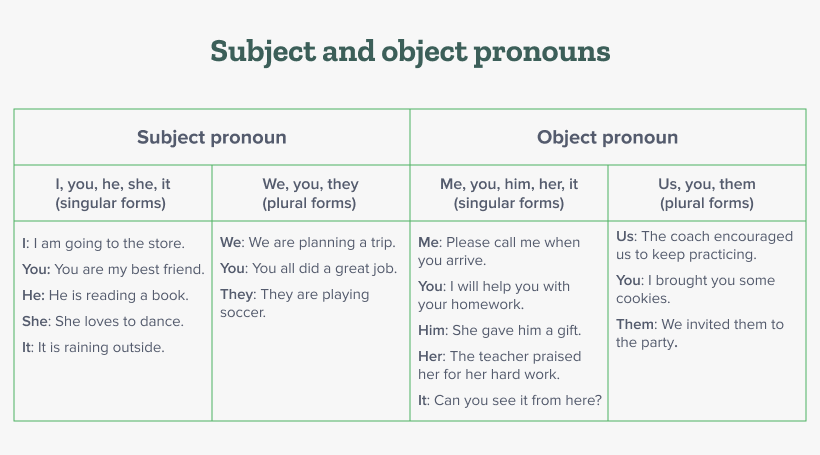Still have questions? Leave a comment

Checklist: Dissertation Proposal
Enter your email id to get the downloadable right in your inbox!
[contact-form-7 id="12425" title="Checklist: Dissertation Proposal"]
Examples: Edited Papers
Enter your email id to get the downloadable right in your inbox!
[contact-form-7 id="12426" title="Examples: Edited Papers"]Need
Editing and
Proofreading Services?

Object of a Sentence: Your Comprehensive Guide
 Aug 10, 2024
Aug 10, 2024 7
min read
7
min read
Mastery of written and verbal English demands knowledge of grammar. Being a good writer, a skilled orator, a focused researcher, or a student training for higher studies calls for significant English proficiency. If you have come online seeking an answer to the question, “What is an object of a sentence”, you are in the right place. It is a key aspect of the clause structures that make up sentences. This article discusses the importance of the object of a sentence and explains how it is used in writing.
What is an object in a sentence?
An object is the recipient of an action. The object in a sentence may be a person, an animal, or a thing. So, how do we then determine the object of a sentence? Here’s a simple way of accurately doing that!
- First, identify the verb in the sentence. You must look for a transitive verb in the sentence. A transitive verb requires an object, while sentences with intransitive verbs do not need objects to complete or communicate their meaning.
- An example of a transitive verb where an object is needed to complete the sentence: Please pass the salt.
- An example of an intransitive verb where an object is not needed to complete the sentence: Jacob slept.
- Ask “what” or “whom” to understand what or who is the receiver of the action (verb) taken. A noun or pronoun will answer the what/whom question asked above.
Let us understand this using some examples.
Mariah reads novels.
- Verb: reads
- What/whom question: reads what?; reads novels
- Object: novels
They invited her to the game.
- Verb: invited
- What/whom question: invited whom?; invited her
- Object: her
The examples above define the direct object, which we will study in detail in the section below.
Types of objects in English
There are two types of objects in English:
Direct object
A direct object receives the action directly. Hence, “what” or “whom” is asked in such cases.
- She called her friend. (called “whom”)
- They purchased a house. (purchased “what”)
Attributes of direct objects in sentences:
Receives the Action:
- Example: “She reads a book.”
Answers “What?” or “Whom?”:
- Example: “He kicked the ball.”
Can Be a Noun, Pronoun, Phrase, or Clause:
- Example: “She found a coin.” (Noun)
- Example: “She found it.” (Pronoun)
- Example: “She found a shiny, old coin.” (Noun Phrase)
- Example: “She found what she was looking for.” (Noun Clause)
Placement:
- Example: “They built a house.”
Not Present in Passive Voice:
- Example:
- Active: “She baked a cake.”
- Passive: “A cake was baked by her.”
Can Have Multiple Direct Objects:
- Example: “She bought apples and oranges.”
Transitive Verbs:
- Example: “She reads a book.”
We hope this answers your question: What is a direct object in a sentence?
Indirect Object
An indirect object shows or describes who is the entity benefitting from the action of a verb in the context of a direct object.
Let’s simplify it using some examples of what is the object in a sentence and understand the concept in more detail.
He gave his sister a gift.
- “His sister” is the indirect object because it answers the question about the direct object, giving us more information about the gift’s recipient.
She baked a cake for the celebration.
- “For the celebration” is the indirect object because it answers the question about the direct object, indicating the reason for baking the cake.
To elaborate further, it answers questions about the direct object by indicating who or what is the recipient of the action directed toward. So, the questions asked to identify indirect objects are “to whom” or “for what”.
Attributes of indirect objects in sentences:
Receives the Benefit or Result of the Action:
- Example: “She gave him a gift.” (“him” is the indirect object receiving the benefit of the action “gave”)
Answers “To Whom?” or “For Whom?”:
- Example: “She made her friend noodles.” (Answers “For whom did she make noodles?”)
Placed Between the Verb and the Direct Object:
- Example: “He told her a story.”
Can Be a Noun or Pronoun:
- Example: “He sent his parents a letter.” (Noun)
- Example: “He sent them a letter.” (Pronoun)
Can Be Replaced with a Prepositional Phrase:
- Example: “She gave him a book.” (Indirect object as a pronoun)
- “She gave a book to him.” (Prepositional phrase)
Typically Used with Verbs of Giving or Communicating:
- Example: “She wrote her friend a letter.”
Not Always Present: Some sentences may not have an indirect object.
- Example: “She reads a book.” (No indirect object)
What is the importance of an object in a sentence?
A direct object in a sentence plays a key role in giving a sentence meaning. It provides readers with vital information about who is the recipient of the action (verb). In the absence of a direct object, verbs might look incomplete or may provide inadequate information to the readers about the idea shared in a given sentence.
Similarly, whenever required, an indirect object in a sentence signifies the action directed toward the direct object.
Together, they ensure that your sentences are complete, clear, and easy to understand.
How to use an object in a sentence?
To use an object in a sentence, place the object after the verb. This shows what or who is the recipient of the action. You can follow the steps below to ascertain whether your sentence is correct.
- Locate the subject: This refers to a person, place, thing, or idea that is “performing the action”.
- Outline the verb: The action being performed will be the verb in that sentence.
- Identify the object: The person, place, thing, or idea that is receiving the action of the verb is the object that you need.
- Check if there’s an indirect object: If another person, place, thing, or idea gives more information about the direct object, answering questions like “to what” or “for whom”, you have an indirect object in the sentence.
Here are some direct object sentence examples:
The words in bold are the subject and the object in these sentences.
- The chef prepared a meal. (Chef – subject, meal – object)
- She wrote a letter. (She – subject, letter – object)
- He kicked the ball. (He – subject, ball – object)
- She painted a picture. (She – subject, picture – object)
- They bought a new car. (They – subject, car – object)
- The cat chased the mouse. (Cat – subject, mouse – object)
- We visited the museum. (We – subject, museum – object)
- She read the book. (She – subject, book – object)
- He fixed the bike. (He – subject, bike – object)
- They watched a movie. (They – subject, movie – object)
Here are some indirect object sentence examples:
- The coach showed the team a new strategy. (Coach – subject, team – indirect object, strategy – direct object)
- The team leader gave the members a bonus. (Team leader – subject, members – indirect object, bonus – direct object)
- She wrote her pen pal a long email. (She – subject, pen pal – indirect object, long email – direct object)
- He mailed his sister a gift. (He – subject, sister – indirect object, gift – direct object)
- She offered her friend a ride home. (She – subject, friend – indirect object, ride home – direct object)
- The author dedicated the book to her mentor. (Author – subject, book – direct object, mentor – indirect object)
- She cooked her family a hearty breakfast. (She – subject, family – indirect object, hearty breakfast – direct object)
- He played the children a song on the violin. (He – subject, children – indirect object, song on the violin – direct object)
- They sent their grandparents a letter. (They – subject, grandparents – indirect object, letter – direct object)
- The professor gave the students extra credit. (Professor – subject, students – indirect object, extra credit – direct object)
Subject and object pronouns
It is easy to confuse a subject and an object while writing a sentence, particularly when your sentence is complex. The subject of a sentence is who or what (person, place, thing, or animal) initiates and completes the action. The object of a sentence determines the recipient of this action.
Given this distinction, let us understand subject and object pronouns and their differences. They are used to replace nouns in sentences, making the content interesting by reducing repetition and monotonous language. Below is a table showing subject and object pronouns.

How not to use an object in a sentence?
We have seen how objects are used in sentences to make them meaningful and clear. In this section, let us see some instances of how objects must not be used while constructing sentences.
- Do not use an object without a verb.
For example, study the following sentence:
She gave the key to him.
The verb “gave” is critical. If it is removed, the sentence is incomplete and meaningless.
- Do not use the wrong object pronoun.
For example, study the following sentence:
She gave I the key
It is incorrect because the pronoun “I” is wrong. The correct sentence is “She gave me the key”.
- Do not place an object in the wrong position in a sentence.
For example, study the following sentence:
She gave the book to her friend
It is correct as the object has been placed after the verb in this sentence. If this were written as “To her friend, she gave the book”, it would be incorrect.
- Do not use an object with an intransitive verb.
Intransitive verbs do not need objects for sentence completion.
For example, study the following sentence:
Anthony walked.
It does not require a direct object. The sentence is complete even without it.
- Do not use an object with unclear antecedents.
For example, the sentence, “Jenny told Anna that she would help her” does not indicate who “she” is. The correct sentence is Sarah told Anna, “I will help you”.
We hope we have been able to simplify the process of identifying the object of a sentence with this article. You can make your content grammatically sound by correctly using objects in a sentence. Do not allow grammar errors to affect the quality of your social media posts, articles, blogs, research papers, and other documents.
If you need professional help editing your content, explore our editing and proofreading services.
Here are some other relevant articles for you:






